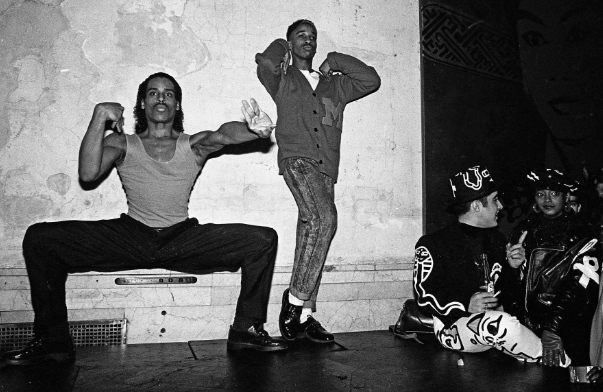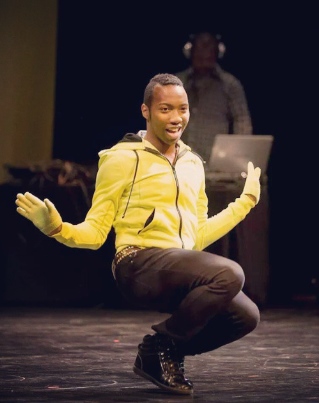Compared to other dances labeled as “classic”, Vogue dance or Voguing is a modern form of house dance. It takes inspiration from the poses of magazine models, hence it looks and feels highly styled and fancy.
Are you curious about the evolution of Vogue dance from its beginning to where it stands in the world of dance now? Let’s discover the story of demography and style behind Vogue.
Table of Contents
Origin Of Vogue Dance
Many people cited Paris Dupree as the pioneer who invented Vogue dance when Dupree used a Vogue magazine as a prop and posed to a background song.
Another source credited Voguing to the gay prisoners in Riker Island’s jail. Either way, it approached more people via the community in New York City.

The Ballroom culture
In the 1920s, the LGBTQ culture of Harlem went through a transformation known as the Harlem Renaissance, finally earning a distinctive shape and advancement in various aspects: arts, literature, and of course music.
From the 60s, African-American and occasional Latino gay males had been participating in Harlem ballroom cultures. The Vogue style rose from this scene continued the community’s attempts to prove that identity can be intersecting and fluid, including aspects such as gender, sexuality, and race.
In the dawn of Vogue, people took inspiration from the Egyptian Hieroglyphs and the postures of acclaimed models from the famous Vogue magazine. The movement of arms and legs is swift, consisting of various static poses combined with confident facial expressions.
For decades, Harlem was the thriving site of arts by LGBTQ individuals. Vogue dance battles gradually took over the traditional pageantry, showing even the dance moves taught and spread in prison.
Another interesting fact about these battles is the Vogue dancers didn’t only compete for the win but also for the pride of their Houses. The Houses were usually named after Milan, Paris, or certain cities with an enriched fashion history. Furthermore, the members would use this name as their last name, as if they were truly families.
“Shade” or acceptable insults were part of the means to impress and interest the judges and the crowd, nothing more. The Voguers didn’t participate to put one another in despair.
Instead, they wanted to tell their own stories and find sympathy in a community of people who knew how it felt to be socially marginalized.
The Evolutions
Gender became a performance in Voguing, drag queens also became a major part of the game. They would pretend to dress up in extravagant costumes, style their hair, and put on thick makeup layers.
Depending on the category they are competing in, a dancer can be real and portray the opposite gender’s behavior or pass as straight.
Despite the variety of classifications and categories for gender and sexuality, the performers mainly fall into MF (Male Figure) or FF (Female Figure). Male Figure refers to butch women/queens and transgendered men, while Female Figure includes trans/cisgender women and drag queens.
Regardless of the categories, every contestant has to embody the spirit of Vogue: extravagant, artificial, and exaggerated.
However, like any other thing, Vogue went through some evolutions too: from the Old Way with rigid and sharp moves to the New Way with more fluidity, and now the Femme with more stunts has taken over.
Check more: Volta Dance: Origin, Steps, Musics & More
3 Styles of Vogue
As popularized as Vogue dancing is, there are surprisingly only three main styles that are usually the talk of the town: Old Way, New Way, and Vogue Fem.
Old Way
The so-called Old Way Vogue refers to the style established before 1990. So, one can say it contains every basic thing that created the foundation for Voguing, inspired by ancient hieroglyphs and modeling poses.
The first Old Way battles we know of were between two rivals instead of an entire group. The rule was also extremely short and simple: If you can “pin” the opponent, you win. So, what does “pinning” mean?
To pin your rival, you will have to prevent them from performing any other moves. Usually, Vogue dancers utilize hands and arms to “trap” the opponent against a wall or force them to stick to floor exercises.
New Way
No longer simple and plain with fashion poses, the New Way style was truly enhanced with new moves.
The most noticeable about the New Way style is “arms control”, a skill to create illusions with wrists and arms, including the locking and tutting techniques we are more familiar with nowadays.
Another signature is the “clicks”, which means the dancers will perform some contortions with their joints.
As dancers showcase imaginary shapes that they picture in their minds, people often describe New Way as a styled, creative variation of mime. The motions will be conducted around the dancer’s body, displaying their memory as well as flexibility.
Vogue Fem
Derived from “femme”, the French term for “woman”, this Voguing style incorporated abundant femininity into its movements and exaggerated it to capture the audience’s attention.
Taking many inspirations from both ballet and modern dance, Vogue Fem has a rather vast variety, from Soft to Dramatic movements.
The Soft side focuses on an effortless flow connecting the Vogue elements and preserves the grace at the same time. Meanwhile, the Dramatic consists of tricks and stunts at a rather formidable speed.
Moves
Learning how to do Vogue dance might take you a while, for you need to master the expression as well as the motions. However, knowing the basic elements will certainly give you a good start!
The five elements of Vogue Fem can be understood as follows.
Catwalk
As the name indicates, this element is not too different from what the models do on the runways. You will walk in the feminine style with a leg crossed over the other and both hips swinging while your arms move in opposition.
Duckwalk
The name refers to what a duck looks like while moving. The dancers mimic it by squatting low and moving forth while kicking their feet outward.
Floorwork
If the competitors want to amplify the sensuality, they will use more floorwork. It is highly demanding in terms of physical ability as they have to twist, roll, and more while on the floor, though it might earn them a lot of points from the judges.
Hands
Aside from telling a story, arm and hand movements are also essential in throwing shades. For example, you can add some miming to rightfully mock how the opponents look.
Spins & Dips
People tend to recognize Vogue Fem through this element. A stunt on the ground is a good description for “Dips”, which involves tucking one leg in and spiraling lower onto the floor (“Spins”).
The audience will feel like the dancers have reached the ground with their heads.
With the expression, you need to practice showing off intense gazes, seductive smiles, and playful gestures – anything that might help you interact with your audience and impress them.
Music
The beats and the melodies are crucial for Vogue performances because they energize the dancers and inspire them to express their individuality as much as possible.
For diversity and influence, genres like house, electro, and disco tend to be highly preferred. The beats created specifically for Vogue will tend to the fluidity and the footwork of the dancers even more.
Whether you go for the nostalgic disco, futuristic electro, or energetic house, the background songs will be the catalyst for your performance.
Vogue Dance Today
After half a century of being in favor of the community, Vogue has become a dance sport of the international underground scene. You can find multiple competitions and grand balls in every nation.
Unsurprisingly, New York is still the center of the style and the scene, yet some “capitals” of Vogue have been established over the years, such as Detroit, Chicago, Dallas, Atlanta, Miami, Las Vegas, LA, Connecticut, Virginia, and more.
The same variety and prosperity can be found in Europe (especially England, Germany, France, Belgium, and the Netherlands), Latino countries, and Asia. The original American ballrooms certainly had a great influence on them all.
For individuals, Vogue inspired many celebrated artists. A good example is Madonna, whose songs and dances undoubtedly popularized Voguing.
Experts see her performances as a pioneer paving the way for Voguing to get to the market because it is impressive and simultaneously attached to the artist.
Besides Madonna, well-known artists like Rihanna, Beyonce, Ariana Grande, and more have also brought Vogue into their works. They learn both from past and modern Vogue dancers while renewing the music with their beats.
Recently, “Kiki” (2016), a documentary movie about Voguing and its ballrooms, has successfully made an impression with how it introduced the modern styles and scenes of Vogue to people, further strengthening the influence of this expressive dance.
Final Words
The power of Vogue dance comes from its origins, whether you lean more toward the gay inmates or the surprising performance of Paris Dupree. Closed groups became a global community, and Voguing events might open a way in places wherein LGBTQ rights are still not yet legalized.
In the end, Voguing is all about accepting yourself, expressing who you are, telling your honest story, and showcasing the identity you need to convey. Do you think you have what it takes to try some Vogue moves?

